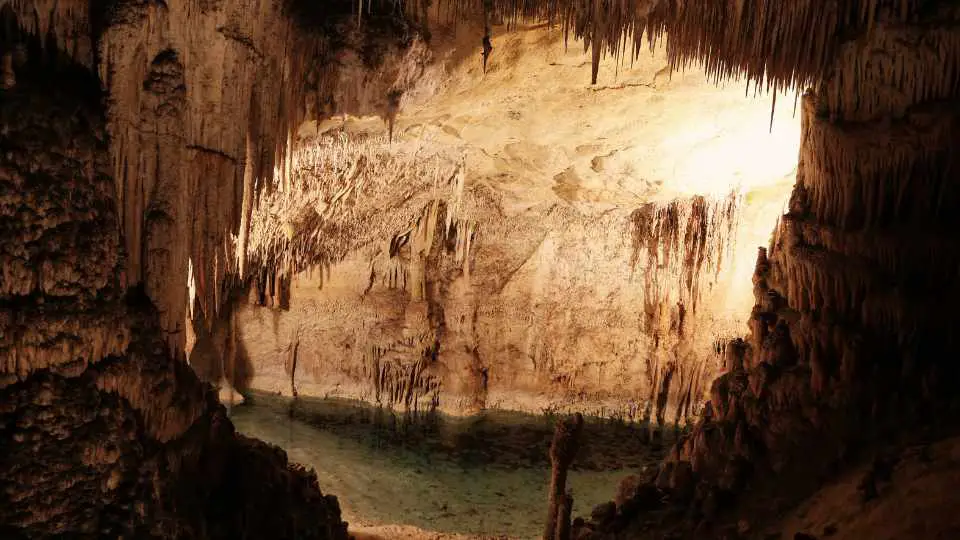Florida Caves: Hidden Natural Wonders to Explore
Caves in Florida offer a unique glimpse into a subterranean world that many might not associate with the Sunshine State. From the intricate limestone formations at Florida Caverns State Park to the mystical underwater caves, these natural wonders present a side of Florida that goes beyond its sandy beaches and theme parks.
Visitors can embark on guided tours to explore these stunning caves, learn about their geological history, and witness fascinating formations such as stalactites and stalagmites.
The state’s cave systems aren’t just limited to dry land; adventurous scuba divers can venture into submerged caves like those found in the Blue Grotto. These sites provide a thrilling but safe experience for those eager to explore underwater wonders. Florida’s caves also serve as a habitat for diverse wildlife, and careful planning ensures the preservation of these fragile ecosystems. Whether you’re an avid spelunker or a curious tourist, Florida’s caves offer an unforgettable adventure.
Overview of Florida Caves
Florida is home to an array of intriguing caves, each offering unique geological formations and fascinating subterranean experiences. Most of these caves are found in limestone regions, formed over millennia. Among them are notable sites like the Blue Grotto and Florida Caverns State Park.
Formation and Types of Caves
Florida’s caves primarily develop in areas with extensive limestone deposits. Over thousands of years, slightly acidic groundwater seeps into limestone formations, dissolving the rock and forming underground voids. This phenomenon, known as karst topography, is prevalent in Florida due to its high limestone content.
Sinkholes are common indicators of underlying cave systems in the state. When the ceiling of a cave collapses, it creates a sinkhole, providing a new entrance to the cave below. Florida’s limestone caves vary widely, from dry caves to underwater caverns.
Noteworthy Caves in Florida
The Blue Grotto in Williston, a popular diving spot, features an impressive underwater cave system. Its crystal-clear waters remain a steady 72 degrees year-round, making it a favored location for divers and swimmers.
Warren’s Cave near Gainesville is the longest dry cave in Florida, extending to about 4 miles. With its narrow passages, it’s an adventure for those willing to traverse tight spaces. Visitors need to sign a waiver due to safety protocols.
Diepolder Caves in the Sand Hill Boy Scout Reservation are among the state’s deepest underwater caves. With passages reaching depths of up to 360 feet, they are not for the faint-hearted and have a dangerous history with numerous fatalities recorded.

Florida Caverns State Park
Florida Caverns State Park in Marianna offers a mix of fascinating history, diverse recreational activities, and important conservation initiatives. The park boasts unique geological formations, amenities suited for family outings, and a glimpse into historical endeavors, making it a notable destination in Northwest Florida.
History and Geography
Opened to the public in 1942, Florida Caverns State Park was developed as part of the New Deal programs. The Civilian Conservation Corps (CCC) played a significant role in its establishment, constructing pathways, buildings, and improving the caves. The park spans over 1,300 acres and features the only air-filled caves accessible to the public in Florida.
Located in the Florida Panhandle, the terrain includes the Chipola River, which carves through limestone creating various scenic karst features. This unique topography provides visitors with an uncommon opportunity to explore above-ground caves and observe geological formations typical to this region.
Recreation and Amenities
Visitors can enjoy a range of activities at Florida Caverns State Park. Cave tours are a highlight, showcasing stunning stalactites, stalagmites, and other formations. These tours are available daily from Memorial Day through Labor Day and tickets can be purchased on a first-come, first-served basis. The tours last about 45 minutes and cover a 1,600-foot path.
The park also offers camping facilities, including both tent and RV sites, complete with modern amenities. There are numerous trails suited for horseback riding, hiking, and biking. Other amenities include a visitor center, a museum, and a gift shop. The day-use areas feature picnic spots and a nine-hole golf course, ideal for family outings.
Conservation Efforts
Conservation remains a priority at Florida Caverns State Park. Efforts focus on preserving the unique cave ecosystems and the surrounding environments. This includes monitoring water quality in the Chipola River and maintaining the integrity of the geological formations. Periodic closures of certain cave sections help in minimizing human impact.
Educational programs aim to raise awareness about the significance of cave preservation and the history surrounding the CCC and the New Deal efforts. The park’s management implements strategies for sustainable tourism, ensuring that both natural and historical resources are protected for future generations.
Guided Tours and Exploring Caves
Florida offers unique opportunities for guided tours within its dry and underwater cave systems. Visitors can also benefit from essential tips and safety measures to ensure a smooth and enjoyable adventure.
Cavern Tours and Experiences
Florida Caverns State Park stands out as the only state park in Florida offering public cave tours. These tours are available daily from Memorial Day through Labor Day, with tickets sold on a first-come, first-served basis at the Florida Caverns Gift Shop. Guides provide fascinating insights into geological formations, such as stalactites and stalagmites.
For those interested in underwater exploration, the Devil’s Spring System offers guided boat tours, as well as opportunities for kayaking or canoeing through the underwater caves. Additionally, Warren’s Cave offers a more rustic spelunking experience in Gainesville, though visitors must sign a waiver to explore its narrow passages.
Visitor Tips and Safety
Safety is paramount when exploring Florida’s caves. Visitors are advised to wear sturdy footwear and bring a flashlight or headlamp. The cave environment can be slippery and dark, making appropriate footwear and lighting essential. In underwater caves, proper diving certification and equipment are mandatory.
For those planning to visit Warren’s Cave, it’s crucial to understand that the cave’s passages are narrow and complex. Always inform someone of your plans before entering the cave. The Florida Caverns State Park limits parking, so arriving early ensures better chances of securing a spot.
Wildlife and Natural Wonders
Florida’s caves host unique wildlife and beautiful natural features, making them worthy of exploration. These subterranean environments support various flora and fauna and offer activities like hiking, swimming, and boating.
Flora and Fauna of Cave Ecosystems
Florida caves shelter diverse wildlife, including bats, salamanders, and cave crickets. Bats play a vital role in controlling insect populations. Cave spiders and cave crickets thrive in the dark, damp conditions. Salamanders can also be found in these habitats, their bright colors often a contrast to the cave’s darkness.
Unique plants, such as those found near cave entrances, adapt to low light and high humidity. Ferns and moss are common, while certain algae may grow in pools within the caves. This mix of animal and plant life underscores the delicate balance within these ecosystems.
Activities and Adventures
Florida caves provide numerous adventure and recreational opportunities. Popular activities include hiking, swimming, and boating. Ginnie Springs and Blue Grotto are excellent spots for swimming and snorkeling in clear waters. Morrison Springs State Park and Peacock Springs State Park feature beautiful blue holes, ideal for diving and swimming.
Those interested in guided tours can visit Florida Caverns State Park, where cavern tours offer a glimpse into geological history. Hiking trails nearby offer a mix of flora and scenic views. For boating enthusiasts, some parks feature boat ramps and canoeing routes, enhancing the experience of exploring Florida’s underground wonders. Entry fees and availability can vary by location, so it’s best to check ahead.






